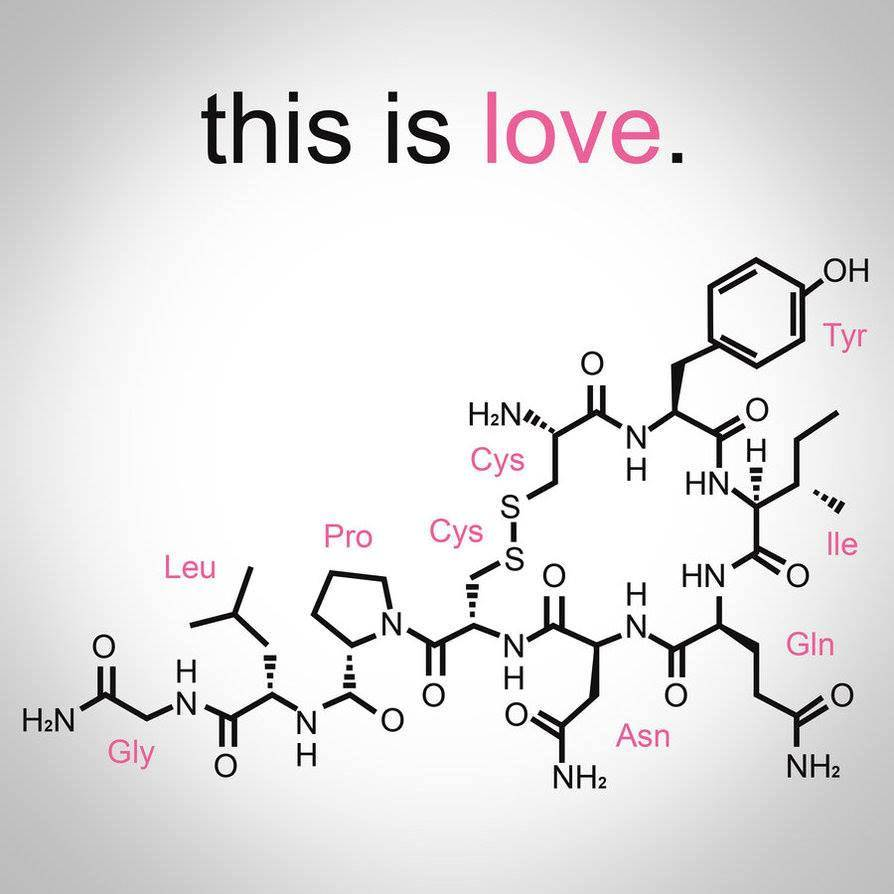Chemistry behind love
Rheigina Quijote. 01/08/2021

The sky is painted a dark blue with small specks of light barely visible within it. The soft drops of rain cascade onto you. They stand a foot from you, looking at you in such a way that it makes your heart race and palms sweat. Suddenly, all rationality is gone.
You can’t help but think, “Why do I have these butterflies in my stomach?”
Although literature and films provide an understanding of the concept of love that we all wonder about, it can also be described from a scientific point of view. The reason for the sleepless nights and endless conversations can be explained by multiple different hormones and neurochemicals that cause the joyous feeling known as love.
According to Harvard University, a study at Rutgers led by Helen Fisher indicates that there are three categories that define romantic love. These categories - lust, attraction and attachment - all contain their own set of hormones that act on us when we experience the giddy feeling.
Lust
Lust is defined as an intense desire for something and is the basis for all organisms’ need to reproduce. There are two main hormones that are produced by the hypothalamus of the brain: testosterone and estrogen. These are also referred to as the ‘male’ and ‘female’ hormones, though they are prominent in both genders. The stimulation and production of these hormones are what drive procreation within humans.
Attraction
The attraction stage is more commonly associated with the feeling of butterflies and fear of rejection. Romantic passion is the more distinct phase we come across that we question or deny once we have fallen head over heels. The Atomic Scale Design Network (ASDN) states during the first attraction, we deal with the neurochemicals that oversee our neural activity: norepinephrine, dopamine and phenylethylamine.
Love can possibly even be addictive. Similarly to lust, the prefrontal cortex, which is the region of the brain that regulates rational behavior, shuts off during attraction. These regions that light up during attraction are the same that signal addiction to materialistic items or drugs such as cocaine. This may be why attraction to another person can be described as an addiction.
The brain pathways that control the reward behavior are involved in attraction. The reward pathways in the brain contain dopaminergic neurons that tell us whether something is aversive or rewarding. During attraction, neurons release dopamine, or the feel-good chemical, which makes our brain correlate happiness to the person and ensures the desire to see them more. When we are participating in activities that feel good to us, such as bonding or spending time with our friends, dopamine is released. With attraction, high levels of dopamine are responsible for the beginning of a relationship to have that exhilarating feeling, hence why the ‘honeymoon’ or ‘cupcake’ phase of a relationship can occur.
Dopamine affects the parts of the brain that control emotional response, as well as pain. It is found to be both a precursor for norepinephrine and a neurotransmitter. A precursor goes through chemical reactions to produce another chemical. Norepinephrine is another chemical involved in attraction and it cannot be produced without dopamine. In order for the effects of norepinephrine to occur, which include sweating, increased heart rate and adrenaline, there must first be enough dopamine produced. Neurotransmitters are what send chemical messages throughout the body to specific cells to perform a function. Our bodies contain a dopamine neurotransmitter system allowing us to feel good by the activation of the dopamine receptors that collaborate with our brain’s pleasure system. This gives us the motivation to continue to do activities that produce dopamine.
Dopamine does not act alone in the beginnings of romantic attraction; there is also norepinephrine. The reason we get sweaty palms when we are with someone we are infatuated with is the result of the neurochemical norepinephrine, or noradrenaline, which plays a role in the fight or flight response. This neurochemical is what stimulates the production of adrenaline. The norepinephrine system acts as the body’s chemical messengers and, when activated, does a variety of actions to specific cell types. This system increases our experience of joy, reduces appetite and also involves cortisol maintenance and initiation. In other words, it is responsible for sustaining the stress hormone, cortisol. According to ReAgent, Richard Schwartz claims that when you are in love, your levels of cortisol are raised, thus suppressing immune function. Maybe love does make us a little sick.
Where cortisol is increased, serotonin is also decreased. Serotonin, a neurotransmitter related to our feelings of happiness, is what affects our body’s functions of mood, memory, sleep and appetite. Communication is disrupted by lower levels of serotonin and causes anxiety, compulsiveness and obsessiveness. This is often why when people are infatuated, they feel that person is all-consuming of their thoughts.
Finally, the last major neurochemical that is involved with attraction is phenylethylamine (PEA). PEA is what releases norepinephrine and dopamine, and is what makes our tummies do somersaults at the antics of our significant other. The more PEA that is produced, the more dopamine is released. PEA is a neuromodulator compared to the other two neurochemicals; it modulates the initiation of the norepinephrine system and increases the levels of dopamine. Though it is not proven, it is assumed that PEA resides in the presynaptic vesicles and takes dopamine’s usual spot, leading to an increase in circulating dopamine.
Maybe love at first sight is slightly overrated, but there’s definitely chemistry when two people first start out in a relationship.
Attachment
After couples have gone through the honeymoon phase and it feels like the spark has died out, the final stage of love sets in. Attachment is the indicator of long-lasting relationships and is not only limited to romantic affiliations, unlike lust and attraction. Though the butterflies are gone, that does not mean the chemistry is gone. The release of dopamine and norepinephrine is exchanged with oxytocin and vasopressin.
As attachment occurs, the ‘puppy love’ act lessens and the neurotransmitter oxytocin increases. Through this, a calmer, more mature form of love is presented with concrete bonds.
Long term relations also include family and friends, forming the emotional bond between people and partners. Oxytocin which is commonly referred to as the ‘cuddle hormone’ or the ‘love hormone’ is produced in the hypothalamus of the brain like dopamine. This hormone deals with the emotional and cognitive behaviors of a person and is prominent in adapting to emotional situations. It’s produced in high quantities when participating in activities that encourage bonding and reducing stress response and anxiety. However, it can also stimulate jealousy and irrationality.
Vasopressin partners with oxytocin within long term relationships to establish closeness and bondage. From these two, there is a disruption of the dopamine and norepinephrine pathways, causing passion to fall and attachment to grow. These hormones help raise health benefits for married couples and decrease depression.
While these hormones provide the development of relationships with others, it can be the downfall of them as well. The National Library of Medicine stated that studying drugs MDMA (Molly or Ecstasy) and GHB (Liquid Ecstasy) assumed that oxytocin may be the reason for the ‘high’ that is produced. It is shown that an overabundance of oxytocin can cause dissociation and reckless behavior. While oxytocin and dopamine may benefit our attraction towards people, a surplus of it can cause an unhealthy emotional dependence and irrational behavior similar to when one is addicted to binge eating and substance abuse. Only at stable doses can these hormones cause the warm, bubbly feeling we know when we fall in love.
Like any science, there is more complexity than what we can really pinpoint. There is a limited amount of what science can explain about the chemistry between people. Whether or not it’s hormones that allow us to find our soulmate rather than fate, or if it really comes from the head instead of the heart, we can’t blame high school teenagers for thinking they have met their matches when we are all dealing with the same hormones and chemistry.
Give oxytocin some love for matchmaking.
Cover Photo: (Melissa Moseley / New Line Productions)

Rheigina is a junior at Bridgeland High School from Houston, Texas. She loves to do focused writing around STEM to expand her interests but also others like her who are still finding their passions in the field. Rheigina also loves spending time with her family by watching movies, trying new foods with her friends, and reading an excessive amount of YA novels when she has the free time.